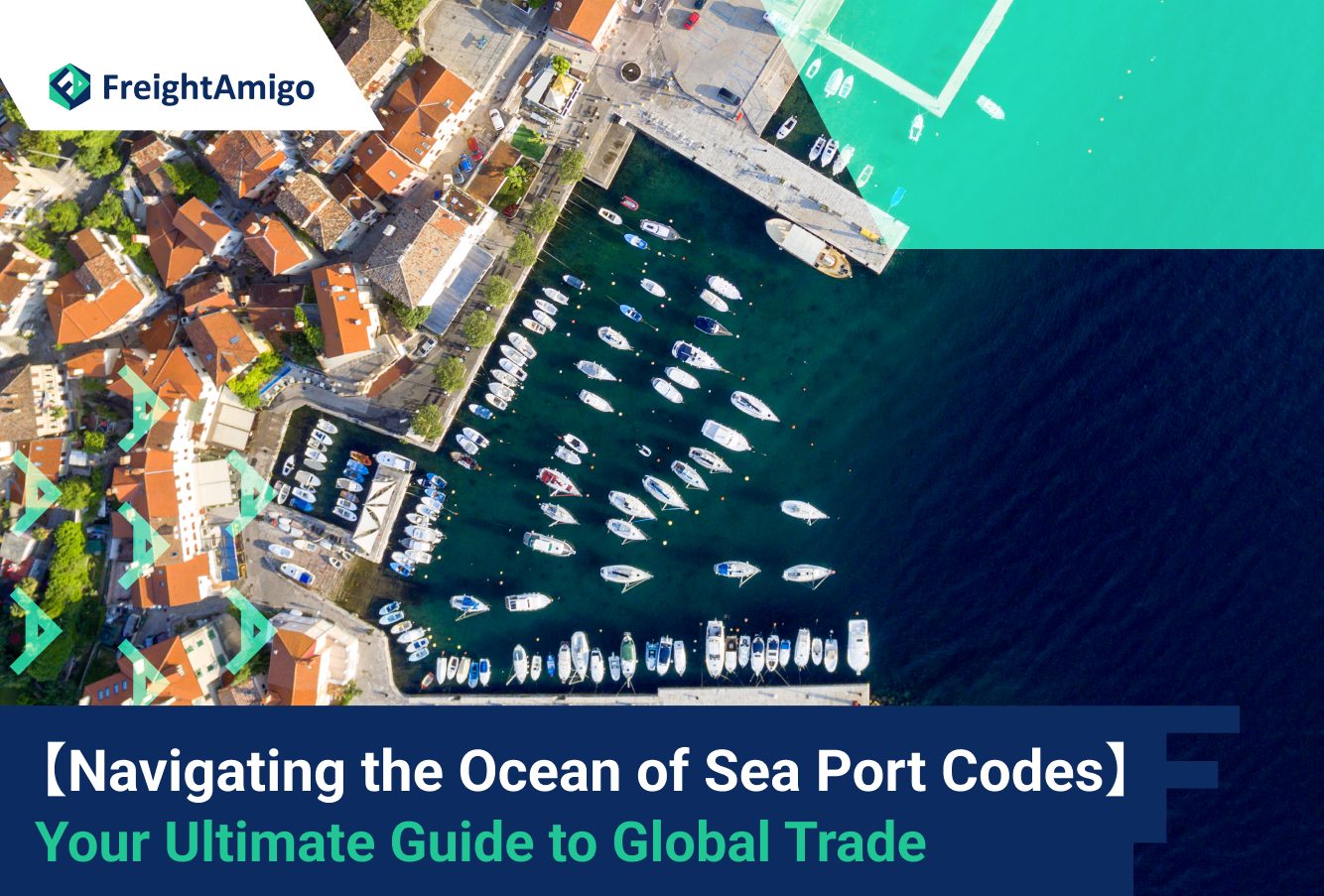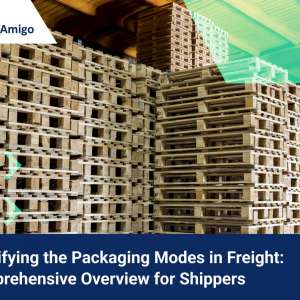December 22nd, 2023 Author Name: Caspian Ng – Marketing Analyst at FreightAmigo
Introduction to Sea Port Codes
In the vast world of global trade, sea port codes play a pivotal role in ensuring smooth operations and efficient communication. These unique codes serve as a standardized system for identifying and categorizing ports across the globe. Whether you’re a seasoned importer/exporter or new to the world of international trade, understanding sea port codes is essential for seamless logistics and successful business transactions. In this comprehensive guide, we will delve into the significance of sea port codes, how to find and utilize them effectively, and provide an overview of common sea port codes and their meanings.
Want to compare the best Express, Air Freight, Sea Freight, Rail Freight & Trucking rates so as to have better control on cost?
Why Sea Port Codes are Important in Global Trade
Sea port codes are an indispensable tool for the global trade industry. They allow businesses to accurately identify and locate ports, ensuring that shipments are directed to the correct destination. These codes streamline communication between various stakeholders involved in the supply chain, such as shipping lines, freight forwarders, customs authorities, and importers/exporters. By using a standardized system of sea port codes, potential errors and confusion are minimized, reducing the risk of delays, additional costs, and lost shipments.
Moreover, sea port codes facilitate efficient documentation and compliance with international trade regulations. Customs authorities require accurate port codes on shipping documents to enable the smooth flow of goods across borders. Importers and exporters must correctly declare the port codes to ensure compliance with customs regulations and avoid penalties or shipment holds. Therefore, having a good understanding of sea port codes is crucial for maintaining compliance and minimizing disruptions in the global trade process.
How to Find and Use Sea Port Codes Effectively
Finding and using sea port codes effectively is a fundamental skill for anyone involved in global trade. Fortunately, there are several reliable resources available to help navigate the vast ocean of sea port codes. One widely-used resource is the International Port Code Directory, maintained by the World Customs Organization (WCO). This comprehensive directory provides a complete list of sea port codes, along with their corresponding locations and other relevant information.
To find the appropriate sea port code for a specific location, one can also consult shipping lines, freight forwarders, or customs brokers. These industry professionals possess in-depth knowledge and expertise in navigating the complexities of global trade, including sea port codes. Additionally, many online databases and platforms offer search functionalities that allow users to easily access sea port codes based on location or port name.
Once you have obtained the relevant sea port code, it is important to accurately utilize it in your documentation and communication. When filling out shipping documents, ensure that the correct port code is provided for both the port of loading and the port of discharge. Double-checking the accuracy of the sea port code will help prevent any potential errors and delays in the transportation process. Effective use of sea port codes also extends to electronic communication systems, such as electronic data interchange (EDI), where accurate codes are essential for seamless data exchange between parties involved in the global trade ecosystem.
Common Sea Port Codes and Their Meanings
Understanding common sea port codes and their meanings is valuable knowledge for anyone engaged in global trade. Here are some examples of frequently encountered sea port codes and their corresponding locations:
Port of Rotterdam, Netherlands (Code: RTM)
Port of Shanghai, China (Code: SHA)
Port of Singapore (Code: SIN)
Port of Los Angeles, United States (Code: LAX)
Port of Hamburg, Germany (Code: HAM)
Port of Felixstowe, United Kingdom (Code: FLX)
Port of Sydney, Australia (Code: SYD)
Port of Durban, South Africa (Code: DUR)
Port of Dubai, United Arab Emirates (Code: DXB)
Port of Buenos Aires, Argentina (Code: BUE)
Port of Yokohama, Japan (Code: YOK)
Port of Le Havre, France (Code: LEH)
Port of Busan, South Korea (Code: PUS)
Port of Antwerp, Belgium (Code: ANR)
Port of New York and New Jersey, United States (Code: NYC)
Port of Santos, Brazil (Code: STS)
Port of Colombo, Sri Lanka (Code: CMB)
Port of Vancouver, Canada (Code: YVR)
Port of Alexandria, Egypt (Code: ALY)
Port of Barcelona, Spain (Code: BCN)
Port of Mumbai, India (Code: BOM)
Port of Genoa, Italy (Code: GOA)
Port of Jeddah, Saudi Arabia (Code: JED)
Port of Istanbul, Turkey (Code: IST)
Port of Auckland, New Zealand (Code: AKL)
Port of Rotterdam, Netherlands (Code: RTM)
Port of Copenhagen, Denmark (Code: CPH)
Port of San Francisco, United States (Code: SFO)
Port of Mombasa, Kenya (Code: MBA)
Port of Montreal, Canada (Code: YUL)
Port of Alexandria, Egypt (Code: ALY)
Port of Hamburg, Germany (Code: HAM)
Port of Chennai, India (Code: MAA)
Port of Cape Town, South Africa (Code: CPT)
Port of Shanghai, China (Code: SHA)
Port of Sydney, Australia (Code: SYD)
These examples illustrate the diverse range of sea port codes and their associated locations. Familiarizing yourself with these codes will enhance your understanding of global trade routes and facilitate efficient communication with industry professionals.
Conclusion
Sea port codes are an essential component of global trade, enabling accurate identification and location of ports worldwide. Understanding the importance of sea port codes, how to find them effectively, and their proper utilization is crucial for seamless logistics and successful business transactions. By investing time and effort in mastering sea port codes, individuals and businesses can navigate the complex world of international trade with confidence and efficiency. So, whether you’re an experienced trader or just starting your journey, make sure to familiarize yourself with sea port codes to ensure smooth sailing in the vast ocean of global trade.
There are different options for cargo transportation. If you want to choose the most convenient and suitable solution, it is best to have the full support of logistics experts! If you are planning to ship goods overseas, please go to the FreightAmigo page for inquiries.
===
Read More:
Guide to Tariffs in Hong Kong | Things You Need to Know
===
If you have any inquiries on logistics/supply chain, feel free to contact FreightAmigo now:
Chat with us online OR
Phone : +852 28121686
WhatsApp: +852 27467829









































